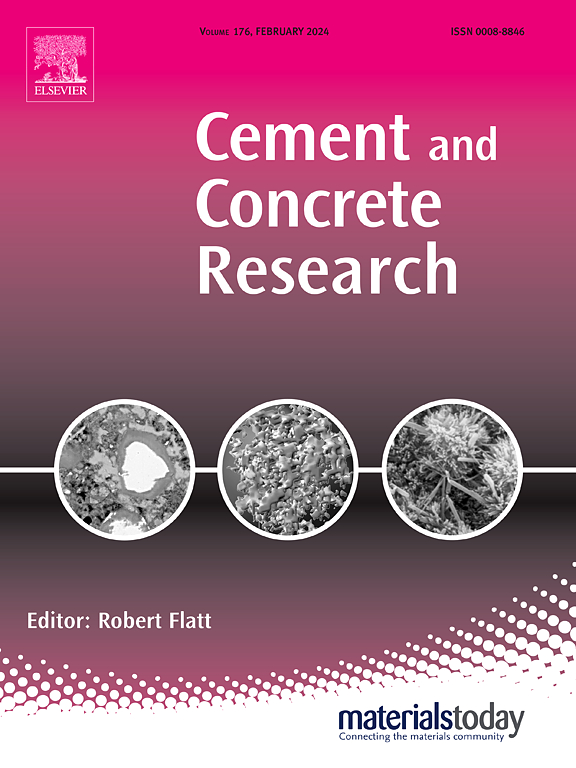The interaction mechanism of polycarboxylate and β-naphthalene sulfonate superplasticizers: Synergistic adsorption rather than competitive adsorption
IF 10.9
1区 工程技术
Q1 CONSTRUCTION & BUILDING TECHNOLOGY
引用次数: 0
Abstract
The challenge of compatibility between polycarboxylate superplasticizer (PCE) and β-naphthalene sulfonate superplasticizer (BNS) remains an enduring puzzle, requiring a comprehensive understanding of their interaction mechanism. In our study, the macroscopic properties, microscopic interfacial adsorption, and intermolecular forces are investigated in detail to elucidate the interaction between PCE and BNS. The results show that the dispersing ability of PCE and BNS decreases under different blending sequences. The increased adsorption of the blended superplasticizers indicates that PCE and BNS undergo synergistic adsorption on the surface of cement particles rather than competitive adsorption. Atomic force microscopy reveals a shift in the intermolecular forces of the blended superplasticizers from repulsion to attraction, including CH-π interactions and hydrophobic interactions. BNS adsorption on the PCE side chain results in the bending and collapse of the latter, which prevents PCE from providing steric hindrance. Moreover, PCE side chains wrap around BNS molecules, reducing the absolute value of zeta potential of cement particles' surfaces. The study, conducted through both experimental and theoretical methods, provides evidence that attractive forces between PCE and BNS have a disruptive influence on the original molecular structure.
聚羧酸酯与β-萘磺酸盐高效减水剂的相互作用机理:协同吸附而非竞争吸附
聚羧酸酯型高效减水剂(PCE)和β-萘磺酸酯型高效减水剂(BNS)之间的相容性是一个长期存在的难题,需要对它们的相互作用机制进行全面的了解。在我们的研究中,详细研究了PCE和BNS的宏观性质、微观界面吸附和分子间作用力,以阐明它们之间的相互作用。结果表明,在不同的共混顺序下,PCE和BNS的分散能力均有所下降。掺合的高效减水剂的吸附量增加表明PCE和BNS在水泥颗粒表面进行的是协同吸附而不是竞争吸附。原子力显微镜揭示了混合超减水剂的分子间力从排斥到吸引的转变,包括CH-π相互作用和疏水相互作用。BNS在PCE侧链上的吸附会导致PCE侧链的弯曲和坍塌,从而使PCE无法提供位阻。此外,PCE侧链缠绕在BNS分子周围,降低了水泥颗粒表面的zeta电位绝对值。该研究通过实验和理论两种方法证明了PCE和BNS之间的吸引力对原始分子结构具有破坏性影响。
本文章由计算机程序翻译,如有差异,请以英文原文为准。
求助全文
约1分钟内获得全文
求助全文
来源期刊

Cement and Concrete Research
工程技术-材料科学:综合
CiteScore
20.90
自引率
12.30%
发文量
318
审稿时长
53 days
期刊介绍:
Cement and Concrete Research is dedicated to publishing top-notch research on the materials science and engineering of cement, cement composites, mortars, concrete, and related materials incorporating cement or other mineral binders. The journal prioritizes reporting significant findings in research on the properties and performance of cementitious materials. It also covers novel experimental techniques, the latest analytical and modeling methods, examination and diagnosis of actual cement and concrete structures, and the exploration of potential improvements in materials.
 求助内容:
求助内容: 应助结果提醒方式:
应助结果提醒方式:


